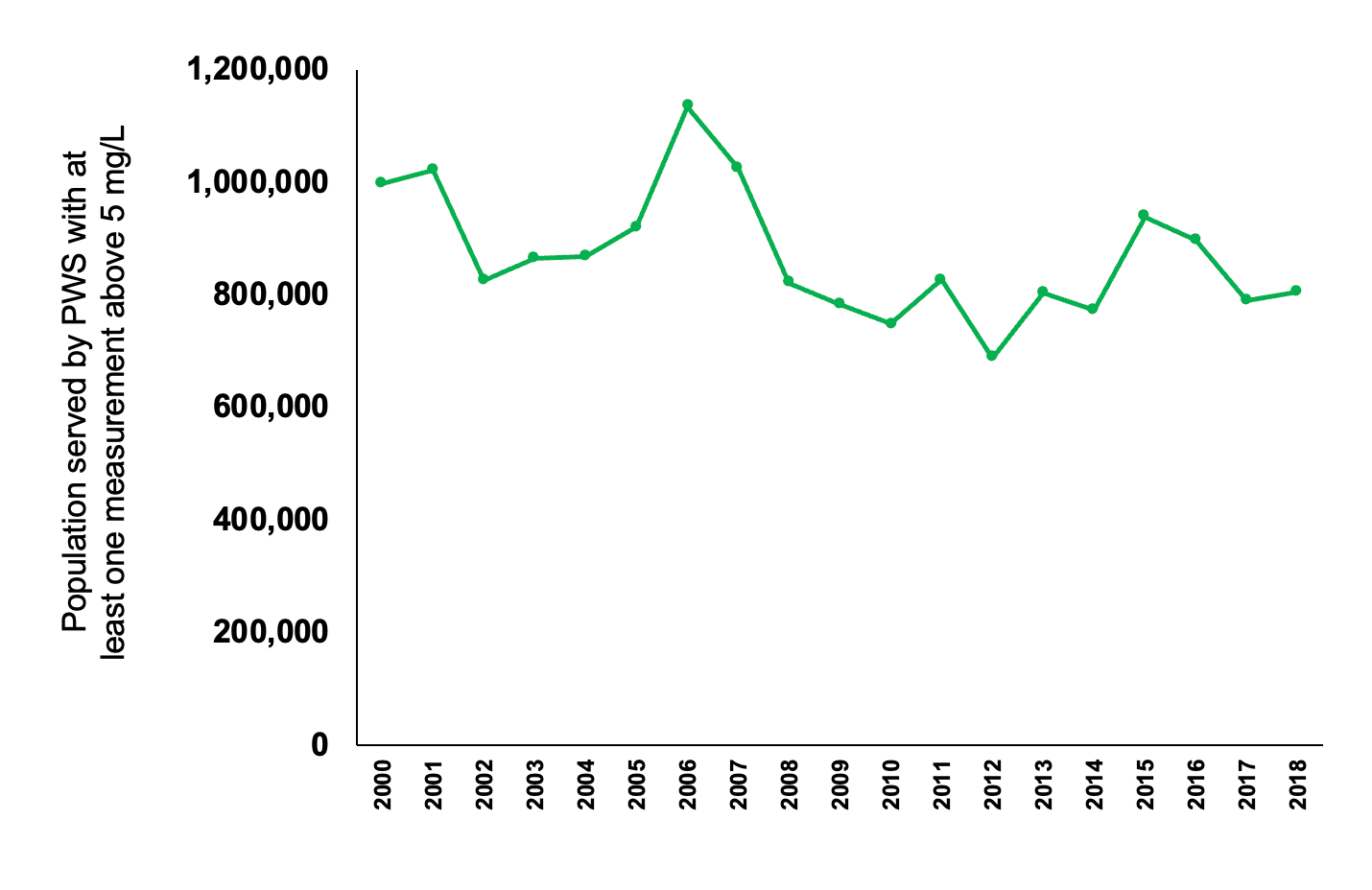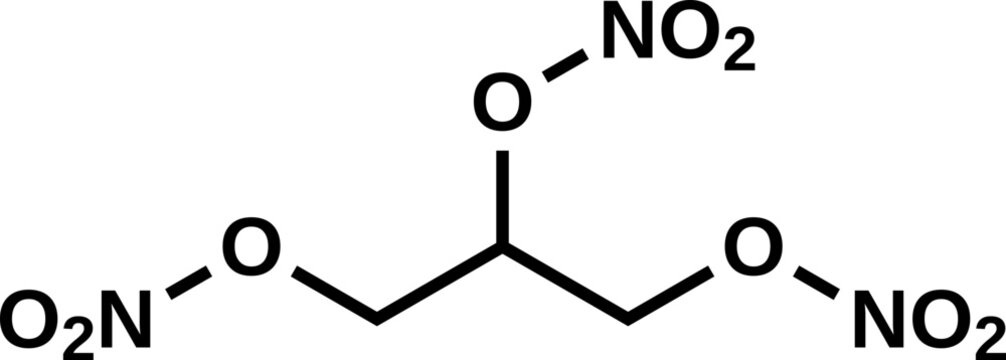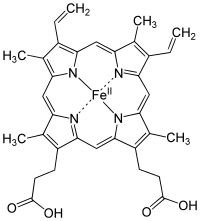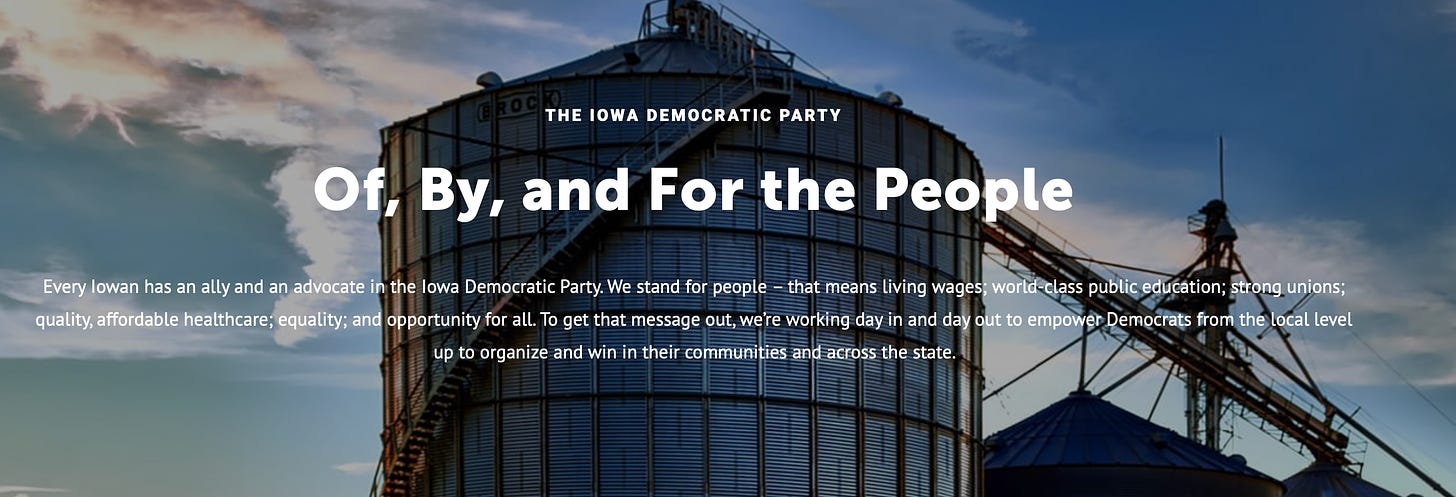When the University of Iowa football squad swarms the field, they’re often playing to take or keep a big hunk of walnut and bronze that weighs about as much as a D-I offensive tackle. Last week they left Mad City with the Heartland trophy, awarded to the winner of the Iowa-Wisconsin game, which features a mad-looking bull more befitting of a Hemingway novel than a pasture in either state.
A month ago, the Hawkeye team bus left Ames with the Cy-Hawk football trophy, which shows the Iowa and Iowa State mascots standing in front of some corn stalks. The trophy for this game has undergone some changes since the on-field rivalry was restored in 1977. The most famous of these revisions was the 2011 version that was never actually awarded, apparently because it was too cornographic. It depicted a farmer doing something weird with an ear of corn while his wife and children looked on. Even then-Governor Branstad hated it.
When Iowa plays Nebraska in this year’s last regular season game, the Hawkeyes will be trying to reclaim the Heroes Trophy, a football perched atop of a chunk walnut, below which lies dark gray acrylic etched with a corn stalk pattern.
And today the Hawkeyes will take on the most embarrassingly named team in college athletics, the University of Minnesota Golden Gophers, for possession of the bronze boar named Floyd (of Rosedale, that is). It’s perhaps fitting that Floyd is the trophy awarded in this battle between the top two Swine States. At least Floyd won’t leave a trail of liquid hog waste down the middle of I-35 if the Gophs can pull off an upset.
Today is also the Iowa Farm Bureau-sponsored AMERICA NEEDS FARMERS (ANF) game. At the end of the first quarter of today’s game at Kinnick Stadium, the fans will wave to the kids at the UI’s Stead Family Children’s Hospital that overlooks the stadium. The University bills this as the “Greatest Tradition in College Sports”, and it might well be. But I’ll ask a rhetorical question here: Does anybody stop and think why some of those kids might be in that hospital?
I don’t write much about the human health consequences of Iowa’s agricultural production systems for the simple reason that I find repulsive the idea that ‘bodies on the curb’ are required before we will correct environmental wrongs. That being said, it is so often and unfortunately the case that some people are motivated only by this, and sometimes not even then.
It’s well known that much of Iowa’s drinking water is polluted with nitrate, the nitrogen trioxide negative ion (NO3-) that was one of the original 20 parameters regulated by 1974 Safe Drinking Water Act (SDWA). A still-standing maximum limit of 10 ppm (as nitrogen) was established to protect infants from methemoglobinemia (blue baby syndrome). Because an infant’s digestive fluids are less acidic than an adult’s, its stomach can harbor bacteria that change (reduce, the chemical opposite of oxidize) nitrate to nitrite (NO2-). Nitrite can then combine with hemoglobin which reduces the blood’s capacity to carry oxygen throughout the infant’s body and the child essentially suffocates. Thus, infant formula prepared with high nitrate water is an acute health risk. There have been only a very few cases of methemoglobinemia sourced to this mechanism since the SDWA became law.
Not much thought was given in 1974 about the possible health consequences for adults and non-infant children drinking nitrate-laden water. With few exceptions, drinking such water was common only during the last century of our existence. We have, however, often consumed high nitrate foods. These include things like leafy greens, beets, radishes, and turnips, foods we now normally associate with a healthy diet. People with hypertension (I am one) are often encouraged to eat these foods because bacteria in our mouth and gut reduce nitrate to nitric oxide (NO) which is a gas and acts to dilate blood vessels. Nitroglycerin is prescribed to angina (heart pain) sufferers because three nitrate ions are embedded in its chemical structure.
We’ve learned some things since 1974 about the fate of ingested nitrate in the adult body. Nitrate can react with other chemicals in the human digestive system to form N-nitroso organic compounds, which are known human carcinogens. This process is catalyzed (hastened) by the heme iron found in red meat. Notably, it is also a process that is inhibited by antioxidants like Vitamin C that are abundant in the high-nitrate vegetables previously mentioned. These antioxidants are not present when we drink high nitrate water.
Evidence has been mounting for some time that the 10 ppm drinking water nitrate standard is not protective for those older than 6 months. We’ve known for 22 years now that there are positive associations between increasing drinking water nitrate and bladder and ovarian cancer in Iowa women (1). Jones (not me) et al. (2) found a 1.6 times elevated risk of bladder cancer in postmenopausal Iowa women who consumed 5 ppm nitrate water for more than four years. Bear in mind there are people in Iowa, including pretty much everyone living in the Des Moines metropolitan area, that drink water above that nitrate level their entire life. Inoue-Choi et al (3) found that consuming water with nitrate > 3 ppm for 11 years doubled the risk of ovarian cancer in Iowa women.
Nitrate inhibits iodine uptake by the thyroid, potentially disrupting thyroid function, and indeed researchers have found positive associations between drinking water nitrate (> 5 ppm for > 5 years) and thyroid cancer (4).
And it’s not just cancer. Brender et al. (5) found that mothers consuming water with more than 5 ppm nitrate were more likely to give birth to babies with spina bifida (2x the risk), limb deficiencies (1.8x) and cleft palate (1.9x). Living within 1 mile of a CAFO doubles your risk of an antibiotic resistant staph infection (6). Merchant et al. (7) found positive associations between childhood asthma and hog production on Iowa farms.
And it’s not just Iowa. A 2020 study (8) found that 111-298 cases of colorectal, ovarian, thyroid, bladder and kidney cancer correlate with high nitrate drinking water in Wisconsin, every year. The same study found that 137-149 annual cases of very low birth rate and 72-79 annual cases of very preterm birth could be sourced back to drinking water nitrate.
Maybe you’ve heard that Iowa was recently found to have the 2nd- highest cancer rate in the United States and we’re the only state with an increasing rate (9). Based on Iowa DNR data about public water supplies, about 800,000 Iowans are drinking high nitrate (> 5 ppm) water supplied through their municipal water system. Thousands more drink high nitrate water from private wells, especially in rural areas. Nationwide, about 5.6 million people are drinking such water and an incredible 14% of them live in Iowa, even though Iowans comprise less than 1% of the U.S. population. A recent Iowa State University study showed that elderly, low income, and minority populations are more likely to drink high nitrate water in Iowa.

I’m sure this is news to some of you reading this essay. But believe me, it is not news to Iowa’s research community and many of Iowa’s establishment politicians and ag titans. Have you ever heard any of the latter talk about it? Have you ever heard even one politician from either party talk about it? I haven’t. On the contrary, I hear that there are some in the Iowa Democratic party that say water quality is the third rail and that their fellow legislators shouldn’t touch it. This shouldn’t be a surprise; their webpage, which claims they “stand for people”, features a grain bin. They care about your cancer no more than the Republicans. They’re probably out buying their Carhartts now for their 2024 television commercials to be filmed in the barnyard of some millionaire farmer.
The folks making the serious money in agriculture, such as the ones that can pay former Iowa governor Tom Vilsack a million-dollar annual salary in between his government gigs at USDA where he cheerleads for the polluters, put a salve on any potential farmer guilt with the bogus “feeding the world” rhetoric. What we’re really doing here is growing corn for fuel ethanol and producing meat protein for people that can afford it. And our gluttony for fertilizer so we can amuse ourselves with these agriculturally superficial but lucrative activities inflates the cost of fertilizer for people like African farmers who really are trying to feed people. U.S. Cornbelt agriculturists are basically dilettantes when it comes to feeding the world—their real mission is to extract C-notes from the world’s best soil and if a few people have to die of cancer or other diseases because of it, then so be it. I’ve said it once and I’ll say it again—what we’re doing here in the best place on earth for agriculture is an abomination.
Why oh why do we as citizens tolerate this, and even celebrate it? An entire stadium of 70,000 people has donned ANF garb only one mile from where I sit typing this essay, paying homage to the polluters while waving at the sick kids from their $114 per game seats.
I just don’t get it.
1) Weyer, P.J., Cerhan, J.R., Kross, B.C., Hallberg, G.R., Kantamneni, J., Breuer, G., Jones, M.P., Zheng, W. and Lynch, C.F., 2001. Municipal drinking water nitrate level and cancer risk in older women: the Iowa Women's Health Study. Epidemiology, pp.327-338.
2) Jones, R.R., Weyer, P.J., DellaValle, C.T., Inoue-Choi, M., Anderson, K.E., Cantor, K.P., Krasner, S., Robien, K., Freeman, L.E.B., Silverman, D.T. and Ward, M.H., 2016. Nitrate from drinking water and diet and bladder cancer among postmenopausal women in Iowa. Environmental health perspectives, 124(11), pp.1751-1758.
3) Inoue‐Choi, M., Jones, R.R., Anderson, K.E., Cantor, K.P., Cerhan, J.R., Krasner, S., Robien, K., Weyer, P.J. and Ward, M.H., 2015. Nitrate and nitrite ingestion and risk of ovarian cancer among postmenopausal women in Iowa. International Journal of Cancer, 137(1), pp.173-182.
4) Ward MH, Kilfoy BK, Weyer P, Wang A. Cerhan JR. Nitrate intake and the risk of thyroid cancer and thyroid disease. Epidemiology 2010; 21: 389–95.
5) Brender, J.D., Weyer, P.J., Romitti, P.A., Mohanty, B.P., Shinde, M.U., Vuong, A.M., Sharkey, J.R., Dwivedi, D., Horel, S.A., Kantamneni, J. and Huber Jr, J.C., 2013. Prenatal nitrate intake from drinking water and selected birth defects in offspring of participants in the national birth defects prevention study. Environmental health perspectives, 121(9), pp.1083-1089.
6) Carrel, M., Schweizer, M.L., Sarrazin, M.V., Smith, T.C. and Perencevich, E.N., 2014. Residential proximity to large numbers of swine in feeding operations is associated with increased risk of methicillin-resistant Staphylococcus aureus colonization at time of hospital admission in rural Iowa veterans. Infection Control & Hospital Epidemiology, 35(2), pp.190-192.
7) Merchant, J.A., Naleway, A.L., Svendsen, E.R., Kelly, K.M., Burmeister, L.F., Stromquist, A.M., Taylor, C.D., Thorne, P.S., Reynolds, S.J., Sanderson, W.T. and Chrischilles, E.A., 2005. Asthma and farm exposures in a cohort of rural Iowa children. Environmental health perspectives, 113(3), pp.350-356.
8) Mathewson, P.D., Evans, S., Byrnes, T., Joos, A. and Naidenko, O.V., 2020. Health and economic impact of nitrate pollution in drinking water: a Wisconsin case study. Environmental Monitoring and Assessment, 192(11), p.724.
9) Miller, V. Cedar Rapids Gazette, February 28, 2023.














Organic small grains farmer here. Illinois. Most excellent and disturbing reading.
Thank you again for speaking the truth for Iowans- You're one of the best scientists we have in our State...WE ARE beyond GRATEFUL!!!